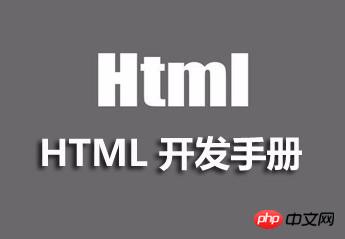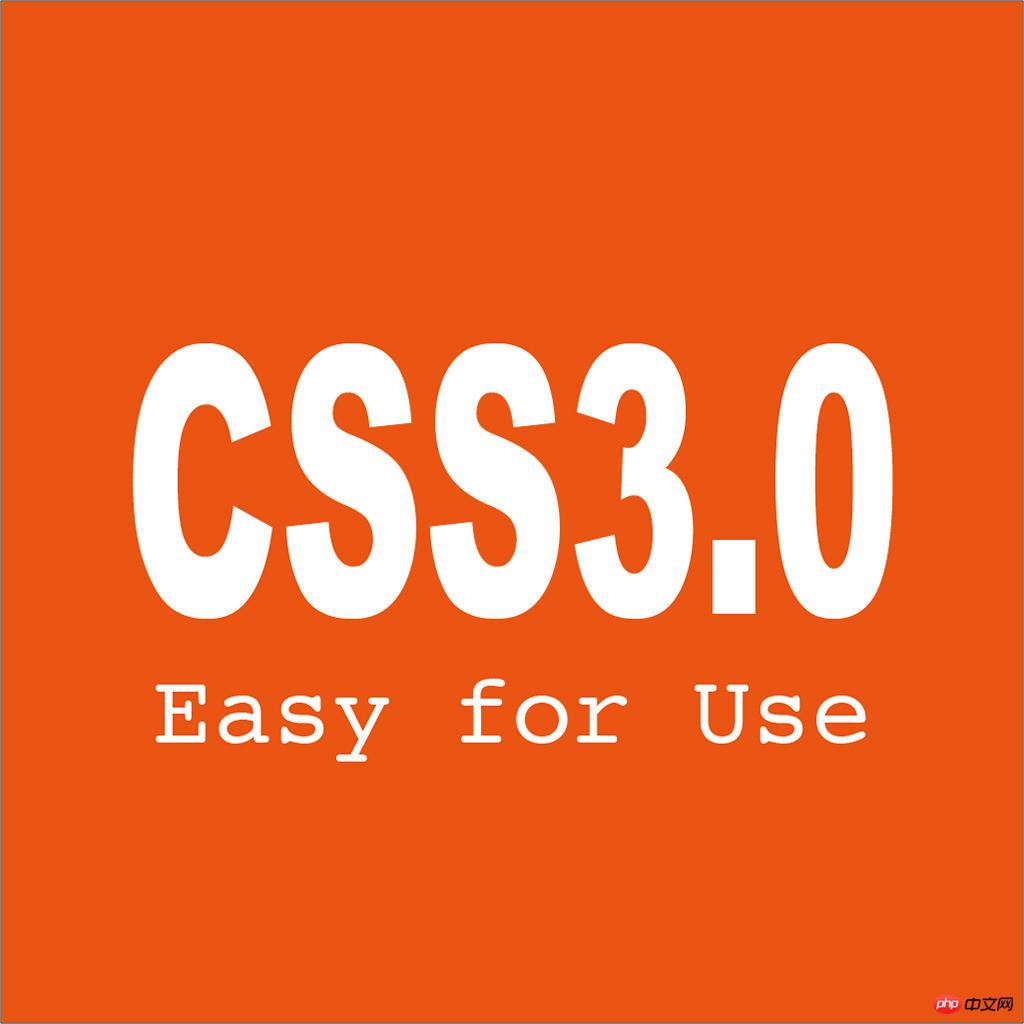Summarize various line wrapping methods in html and css
In web development, you can use the br tag in HTML to wrap lines. If you are in an article, you can add
to the place where the article needs to wrap to achieve automatic line wrapping - often There is no gap between the small line break mentioned and before the line break; use the tag to achieve a large line break. You can also use css attributes to implement automatic line wrapping and forced line wrapping. Use css to wrap consecutive English letters and numbers. If you encounter the article title list style and hope not to wrap, you can also use css style attributes to perform some control. This article is to talk about various line breaks in html and css.
You can first learn free courses related to php Chinese website
1. Study"HTML Development Manual"## tags
tags and
"CSS 3.0 Reference Manual" Various line break properties
html, line breaks in css
1.How to deal with css overflow and line breaks
Line breaks,Note: Only valid for English
a. Long word wrap word-wrap: normal: Default, using the browser's default form, without destroying the word structure break-word: break the structure of the word b, text line break word-break: Value:normal:
break-all: Destroy the word structure for line break keep-all: Break line under the space in half-width state2.css control forced line break Solution
Under normal circumstances, elements have the default white-space:normal (automatic line wrapping, white-space:nowrap if not line wrapping). When the entered text exceeds the defined width, it will automatically wrap. But when the entered data is a bunch of characters or letters or numbers without spaces (regular data should not be there, but some testers will do it this way), when the width of the container is exceeded, the container will be expanded. Line break. 3.Introduction to paragraph layout and line wrapping methods of HTML web pages
The appearance of a web page depends largely on its layout. When large paragraphs of text appear on the page, they are usually planned in paragraphs, and line breaks are also divided very strictly. This section starts with the detailed settings of paragraphs, so that readers can use tags to handle large paragraphs of text freely after learning. 4.How to implement forced line breaks or non-line breaks in DIV, td, p and other containers in html
normal: According to text in Asian languages and non-Asian languages Rules that allow line breaks within wordsbreak-all : This behavior is the same as normal for Asian languages. Breaks within any word of a line of non-Asian language text are also allowed. This value is suitable for Asian text that contains some non-Asian text
keep-all : Same as normal for all non-Asian languages. For Chinese, Korean, and Japanese, word breaks are not allowed. Suitable for non-Asian text syntax that contains a small amount of Asian text: word-wrap : normal | break-word
Related Questions and Answers
1.How to wrap the text displayed when the mouse hovers over the title?
2.How to wrap the string returned in the angular filter
2. css English paragraph line wrapping, word truncation
[Related recommendations]
1. PHP Chinese website free video tutorial: 《php.cn Dugu Jiujian (2) - CSS video tutorial"
2. PHP Chinese website free tutorial: "Learn HTML+CSS at your fingertips"
The above is the detailed content of Summarize various line wrapping methods in html and css. For more information, please follow other related articles on the PHP Chinese website!

Hot AI Tools

Undresser.AI Undress
AI-powered app for creating realistic nude photos

AI Clothes Remover
Online AI tool for removing clothes from photos.

Undress AI Tool
Undress images for free

Clothoff.io
AI clothes remover

AI Hentai Generator
Generate AI Hentai for free.

Hot Article

Hot Tools

Notepad++7.3.1
Easy-to-use and free code editor

SublimeText3 Chinese version
Chinese version, very easy to use

Zend Studio 13.0.1
Powerful PHP integrated development environment

Dreamweaver CS6
Visual web development tools

SublimeText3 Mac version
God-level code editing software (SublimeText3)

Hot Topics
 1382
1382
 52
52
 The Roles of HTML, CSS, and JavaScript: Core Responsibilities
Apr 08, 2025 pm 07:05 PM
The Roles of HTML, CSS, and JavaScript: Core Responsibilities
Apr 08, 2025 pm 07:05 PM
HTML defines the web structure, CSS is responsible for style and layout, and JavaScript gives dynamic interaction. The three perform their duties in web development and jointly build a colorful website.
 How to use bootstrap in vue
Apr 07, 2025 pm 11:33 PM
How to use bootstrap in vue
Apr 07, 2025 pm 11:33 PM
Using Bootstrap in Vue.js is divided into five steps: Install Bootstrap. Import Bootstrap in main.js. Use the Bootstrap component directly in the template. Optional: Custom style. Optional: Use plug-ins.
 How to write split lines on bootstrap
Apr 07, 2025 pm 03:12 PM
How to write split lines on bootstrap
Apr 07, 2025 pm 03:12 PM
There are two ways to create a Bootstrap split line: using the tag, which creates a horizontal split line. Use the CSS border property to create custom style split lines.
 How to resize bootstrap
Apr 07, 2025 pm 03:18 PM
How to resize bootstrap
Apr 07, 2025 pm 03:18 PM
To adjust the size of elements in Bootstrap, you can use the dimension class, which includes: adjusting width: .col-, .w-, .mw-adjust height: .h-, .min-h-, .max-h-
 How to set up the framework for bootstrap
Apr 07, 2025 pm 03:27 PM
How to set up the framework for bootstrap
Apr 07, 2025 pm 03:27 PM
To set up the Bootstrap framework, you need to follow these steps: 1. Reference the Bootstrap file via CDN; 2. Download and host the file on your own server; 3. Include the Bootstrap file in HTML; 4. Compile Sass/Less as needed; 5. Import a custom file (optional). Once setup is complete, you can use Bootstrap's grid systems, components, and styles to create responsive websites and applications.
 How to insert pictures on bootstrap
Apr 07, 2025 pm 03:30 PM
How to insert pictures on bootstrap
Apr 07, 2025 pm 03:30 PM
There are several ways to insert images in Bootstrap: insert images directly, using the HTML img tag. With the Bootstrap image component, you can provide responsive images and more styles. Set the image size, use the img-fluid class to make the image adaptable. Set the border, using the img-bordered class. Set the rounded corners and use the img-rounded class. Set the shadow, use the shadow class. Resize and position the image, using CSS style. Using the background image, use the background-image CSS property.
 React's Role in HTML: Enhancing User Experience
Apr 09, 2025 am 12:11 AM
React's Role in HTML: Enhancing User Experience
Apr 09, 2025 am 12:11 AM
React combines JSX and HTML to improve user experience. 1) JSX embeds HTML to make development more intuitive. 2) The virtual DOM mechanism optimizes performance and reduces DOM operations. 3) Component-based management UI to improve maintainability. 4) State management and event processing enhance interactivity.
 How to view the date of bootstrap
Apr 07, 2025 pm 03:03 PM
How to view the date of bootstrap
Apr 07, 2025 pm 03:03 PM
Answer: You can use the date picker component of Bootstrap to view dates in the page. Steps: Introduce the Bootstrap framework. Create a date selector input box in HTML. Bootstrap will automatically add styles to the selector. Use JavaScript to get the selected date.






